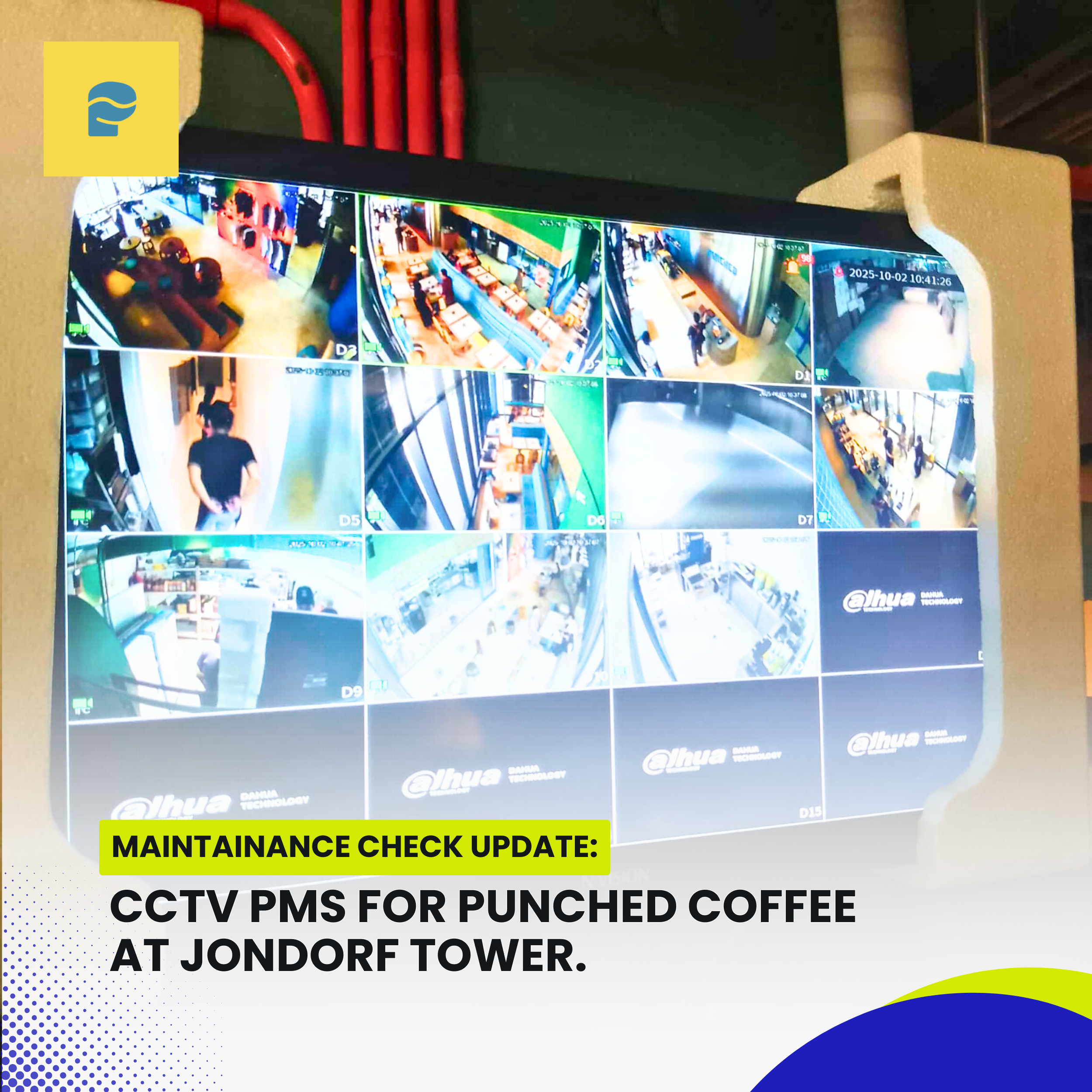CCTV PMS for Punched Coffee at Jondorf Tower. Introduction. On October 2, 2025, the team carried out a scheduled Preventive Maintenance Service (PMS) for the newly installed CCTV system and access points …
What is an Access Point?

Introduction
In today’s connected world, seamless internet access is essential—whether you’re working remotely, studying online, streaming movies, or managing smart devices. Behind the scenes of every strong and stable Wi-Fi network is a powerful piece of hardware called an access point. Despite its importance, many people confuse it with other devices like routers and range extenders.
This article will help you understand what an access point is, how it works, how it differs from other network tools—especially range extenders—and why it’s crucial for reliable wireless communication in homes, offices, and public spaces.
What is an Access Point Video.
What is an Access Point?
An access point (AP) is a networking device that allows Wi-Fi-enabled devices to connect to a wired network. It acts like a gateway between your local wired infrastructure (like a switch or router) and wireless clients (like smartphones, laptops, and smart TVs).
Access points extend the range and capacity of a wireless network. They are commonly used in larger spaces like office buildings, campuses, hospitals, and even multi-story homes where a single router cannot cover every corner.
How Does an Access Point Work?
- Connection to Wired Network: The AP is connected via Ethernet to a router or a network switch.
- Signal Transmission: It converts the wired signal into a wireless signal and broadcasts it as a Wi-Fi network.
- Device Communication: Wireless devices within the coverage area connect to the AP just as they would connect to a home router.
- Backhaul to the Network: The AP sends and receives data from the wired network on behalf of the wireless clients.
This setup creates a smooth bridge between wired infrastructure and wireless devices, allowing seamless communication.
Types of Access Points.
1. Standalone Access Points
Also known as fat APs, these are fully functional and self-contained. They manage all wireless tasks independently and are ideal for small businesses or advanced home networks.
2. Controller-Based Access Points
These are thin APs managed centrally by a wireless controller. Large organizations use them to simplify administration, update configurations, and monitor traffic centrally.
Proper cable management practices were strictly followed—each bundle was labeled, and color-coded tags were used for easy identification of power lines vs. data lines.
3. Mesh Access Points
These APs connect with each other wirelessly, forming a mesh network that extends coverage over large areas like campuses or parks. Devices automatically connect to the closest and strongest node.
4. Cloud-Managed Access Points
They offer remote configuration and monitoring through a cloud dashboard, making them popular in IT environments needing central visibility across multiple sites.
5. Outdoor Access Points
Designed to withstand weather and environmental challenges, outdoor APs provide coverage in open areas like warehouses, resorts, or stadiums.
Access Point vs. Range Extender: What’s the Difference?
Access points and range extenders both serve to improve wireless coverage—but they do so in very different ways.
Conceptual Difference:
- An Access Point connects directly to your wired network and creates a new wireless access point that behaves like another hub of your Wi-Fi.
- A Range Extender connects wirelessly to your existing Wi-Fi signal and repeats it, extending the network’s reach—but often with reduced performance.
Feature | Access Point (AP) | Range Extender |
Connection Type | Wired (via Ethernet to router/switch) | Wireless (connects to router’s signal) |
Signal Quality | Strong and stable; high-speed | Lower speed and may introduce latency |
Coverage | Extends and strengthens signal by adding new AP zones | Repeats existing signal, usually reducing speed |
Ideal Environment | Large homes, offices, campuses | Small homes or isolated weak spots |
Device Handoff | Seamless roaming (if configured correctly) | Manual switch often required by user devices |
Setup Complexity | Requires Ethernet cable and configuration | Easier to set up; plug and play in most cases |
Bandwidth Sharing | Dedicated backhaul; doesn’t use Wi-Fi bandwidth | Uses part of the Wi-Fi bandwidth to communicate |
Scalability | Highly scalable; add more APs as needed | Limited; multiple extenders can cause interference |
Real-Life Scenario
Imagine you live in a two-story house. Your router is downstairs, and you’re experiencing weak signals upstairs:
- A range extender may temporarily help you get a signal upstairs, but it will likely cut your speed in half.
- An access point connected via an Ethernet cable (or Power over Ethernet) will give you full-speed, seamless internet upstairs.
In enterprise environments or larger homes, access points are always the preferred solution.
Benefits of Access Points.
Access points provide more than just better coverage—they unlock a variety of advantages, especially in professional or high-demand environments:
1. Scalability
Need to cover a wider area? Simply add more APs to extend your network seamlessly.
2. Speed and Stability
Since access points use wired connections to feed the Wi-Fi signal, they provide faster and more reliable internet compared to wireless extenders.
3. More Devices
Modern APs can handle dozens or even hundreds of connections simultaneously, making them ideal for office or event settings.
4. Centralized Management
Controller-based or cloud-managed APs allow IT admins to manage multiple APs remotely, apply updates, monitor health, and enforce security policies.
5. Seamless Roaming
In a well-configured AP system, users can move around without noticing any drop in connection—essential for businesses and large buildings.
Setting Up an Access Point.
Step 1: Plan Placement
Use a Wi-Fi heat map or simply identify weak signal zones to decide where APs are needed. Avoid placing them behind thick walls or near metal appliances.
Step 2: Connect via Ethernet
Connect your AP to the router or switch using an Ethernet cable. For cleaner installation, consider using PoE (Power over Ethernet) to eliminate the need for a power outlet.
Step 3: Configure the AP
Access its web interface using a browser. Configure:
- SSID (network name)
- Security (WPA2 or WPA3)
- Channel settings (auto/manual)
Step 4: Test Performance
Use tools like Speedtest or Wi-Fi Analyzer to test coverage, signal strength, and throughput.
Step 5: Add More APs (if needed)
Use the same SSID and password across all access points to enable seamless roaming.
Common Challenges When Using Access Points.
1. Installation Effort
Wired setup may require drilling, running Ethernet cables, or investing in Power over Ethernet.
2. Configuration Complexity
Unlike plug-and-play extenders, APs require technical setup, especially when dealing with VLANs or mesh topology.
3. Cost
High-quality or enterprise-grade access points can be expensive—though they are a long-term investment.
4. Interference
Multiple APs on the same channel can cause overlap and poor performance. Use tools to assign non-overlapping channels.
Use Cases for Access Points.
Homes
Especially in large houses or homes with thick walls, APs eliminate dead zones and maintain streaming or gaming quality.
Offices
Organizations use multiple APs for employees, printers, and visitors. Controller-managed APs provide security, VLANs, and traffic control.
Schools and Universities
Access points power digital classrooms, online testing, and virtual labs with secure, consistent connections.
Hotels and Restaurants
Public venues use APs with captive portals for guest access while protecting their internal business networks.
Industrial/Outdoor
Outdoor APs with rugged enclosures connect sensors, surveillance cameras, or devices in warehouses, farms, or factory sites.
The Future of Access Points.
With the rise of cloud computing, remote work, and smart devices, access points are evolving fast:
Wi-Fi 6 and Wi-Fi 7
New generations of Wi-Fi deliver faster speeds, lower latency, and better handling of high device density.
AI and Cloud Management
Cloud-managed APs with AI can detect issues, optimize performance, and reduce downtime automatically.
IoT Integration
APs are becoming central hubs for smart homes, smart cities, and industrial IoT setups.
Sustainability and Energy Efficiency
Newer APs are being designed with energy-saving protocols and eco-friendly materials.
Conclusion
Access points are the backbone of modern wireless networking. Unlike simple range extenders, they provide faster speeds, greater coverage, and scalability for growing connectivity needs. Whether you’re building a home network free of dead zones or rolling out campus-wide enterprise Wi-Fi, understanding how and when to use access points is essential.
By investing in the right access point setup, you can future-proof your network, enhance user experience, and support the increasing number of smart and connected devices in your environment.
Case Studies
IT Support for File Sharing at Chicky’Oink. Introduction. In today’s fast-paced business environment, efficient data sharing plays a vital role in ensuring smooth operations. Businesses rely heavily on well-structured IT networks that …
CCTV Support at Lapu-Lapu, Maribago. Introduction. At InstallersPH IT Solutions, we believe that after-sales support is just as essential as the initial installation. Recently, our team was called to provide technical assistance …



